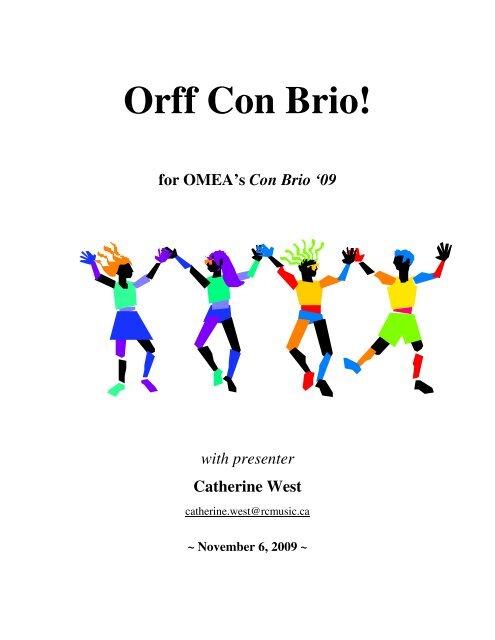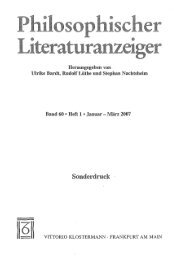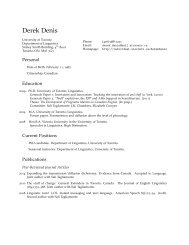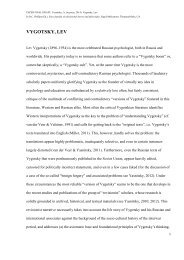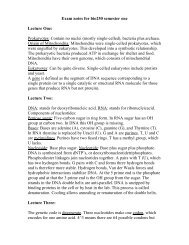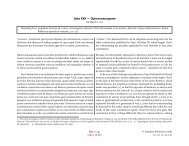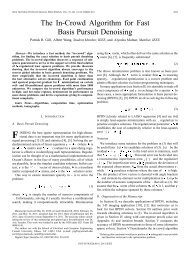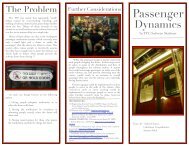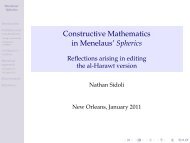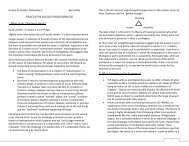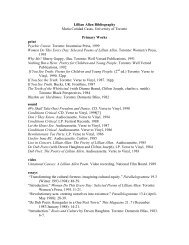Orff Con Brio!
Orff Con Brio!
Orff Con Brio!
Create successful ePaper yourself
Turn your PDF publications into a flip-book with our unique Google optimized e-Paper software.
<strong>Orff</strong> <strong>Con</strong> <strong>Brio</strong>!<br />
for OMEA’s <strong>Con</strong> <strong>Brio</strong> ‘09<br />
with presenter<br />
Catherine West<br />
catherine.west@rcmusic.ca<br />
~ November 6, 2009 ~
<strong>Con</strong>tents<br />
Lesson Grade Page<br />
Tall Shops Ostinato 1-2 3<br />
Riding on a Caravan K-3 5<br />
Did You Go to the Barney? 1-2 6<br />
Double the Trouble, Double the Fun! 3 8<br />
Funga Alafia 3 10<br />
What’s In a Name? 3 13<br />
Derry Ding Dong Dason 3 16<br />
Pack She Back 4 19<br />
<strong>Orff</strong> to the Stars! 4 21<br />
I’se the B’y 5 24<br />
Take Five! 6 27<br />
Old Abram Brown 6 30<br />
Epitaph 4-6 34<br />
<strong>Orff</strong> Instrument Abbreviations<br />
BX bass xylophone<br />
AX alto xylophone<br />
SX soprano xylophone<br />
BM bass metallophone<br />
AM alto metallophone<br />
SM soprano metallophone<br />
AG alto glockenspiel<br />
SG soprano glockenspiel<br />
©C. West, 2009 2
Tall Shops Ostinato<br />
Grade<br />
1-2<br />
Expectations<br />
C 1.1, C 1.2, C 1.3, C 1.4, C 1.5, C 2.3<br />
Fundamental <strong>Con</strong>cepts: Duration - beat and rhythm; Pitch; Dynamics and other expressive controls; Timbre;<br />
Texture<br />
Critical Learning<br />
Students use their understanding of beat and rhythm patterns to create ostinati to accompany a poem about their<br />
own school neighbourhood. They perform their compositions using speech and percussion instruments and<br />
symbolize using standard rhythm notation.<br />
Materials<br />
Tall Shops in the Town (or another short poem)<br />
Word Wall and cards<br />
1 stick-on label per student<br />
1 City Ostinato page for every group of 4 students<br />
Small percussion instruments<br />
Minds On! (Elicit and Engage)<br />
1. Students identify the features of their own community as they go<br />
for a walk in their own school neighbourhood.<br />
2. On returning from the walk, create a list of things you have seen<br />
on the class word wall.<br />
3. Learn Tall Shops, or another poem more representative of the<br />
school community. (The poetry of Dennis Lee is a good source<br />
of poetry with urban settings.)<br />
4. Speak the poem a number of ways using high, low, fast, slow,<br />
loud, soft voices.<br />
5. Create contrasting actions or gestures for the poem, using student<br />
suggestions.<br />
6. Speak poem patting the beat, then repeat, clapping the rhythm.<br />
7. Challenge students to switch between the beat and the rhythm on<br />
a signal.<br />
8. Half the class pats the beat, half claps the rhythm. Switch.<br />
Action! (Explore and Explain)<br />
9. Identify words that have 1 and 2 syllables from the word wall<br />
list. Note that the 2-syllable words must have the stress on the<br />
first syllable. (“Taxi” works but “hotel” does not.)<br />
10. Select a category (e.g., transportation) and model making an<br />
ostinato from four of these words that fit that category (e.g., “car,<br />
taxi, car, bus”).<br />
11. Perform, with half the class speaking the ostinato and half<br />
speaking the words of the poem.<br />
12. Divide students into groups of four. The group decides on a<br />
category for their ostinato, then each child writes one of the list<br />
words on a sticker. (More words may need to be added to fit the<br />
category selected.)<br />
13. Students try arranging their stickers in different orders. When<br />
they decide on an order, hear them say it (helping them to say it<br />
with a steady beat), and give them a planner sheet to stick down<br />
their words.<br />
14. Share performances: each ostinato group speaks its ostinato in<br />
turn, as the class recites the poem. Hint: you may need to support<br />
the ostinato group as they speak, to keep the ostinato steady.<br />
Pause and Ponder:<br />
Assessment for Learning<br />
4. Observe class performance of<br />
poem. Is the speech expressive and<br />
rhythmical? Do students maintain a<br />
steady beat? Are actions clearly<br />
articulated and linked to the correct<br />
text?<br />
6 -8. Observe students as they<br />
perform the beat and the rhythm. Are<br />
they accurate with the beat, and close<br />
to accurate with the rhythm? (grade<br />
1s may not be completely accurate)<br />
Pause and Ponder:<br />
Assessment for Learning<br />
12. Assess the written product – have<br />
students understood the task, selected<br />
an appropriate category, individually<br />
identified a word belonging to the<br />
category, written down the word, and<br />
created an ostinato from the four<br />
words?<br />
13. Observe each ostinato group as<br />
they perform. Do the students speak<br />
rhythmically, maintain the beat, and<br />
speak confidently? Note: some<br />
support is appropriate for students at<br />
these grade levels.<br />
©C. West, 2009 3
<strong>Con</strong>solidation (Elaborate, Evaluate, Extend)<br />
15. Ostinato groups select non-pitched percussion instruments to<br />
perform the rhythm of their ostinato. Repeat the performance,<br />
using the instruments along with speech.<br />
16. Using any available technology (Audacity, Garage Band, tape<br />
recorder etc.) create a recording of the performance. Listen to the<br />
performance, and discuss:<br />
Can you hear all the words clearly in the poem and ostinato?<br />
Did we speak with expression?<br />
Did each ostinato group stay together?<br />
What part did you like best? Why?<br />
What could we do better next time?<br />
Resources:<br />
17. Another day write ta’s q under the 1-syllable words, and titi’s<br />
1. Poem<br />
ee under the 2-syllable words. Perform the ostinati speaking the<br />
rhythm syllables.<br />
Tall shops in the town,<br />
Elevators up and down,<br />
Doors swinging round about,<br />
People moving in and out.<br />
2. Student Sheet: Ostinato Template Page<br />
Traditional rhyme<br />
Our City Ostinato Room ____<br />
Names _______________________________<br />
________ ________ ________ ________<br />
Pause and Ponder:<br />
Next Steps<br />
When students are confident and<br />
accurate, perform the ostinati without<br />
speaking the words out loud, to<br />
develop inner hearing.<br />
Students need many more<br />
opportunities to relate word rhythms<br />
to simple notation and vice versa.<br />
Adapting the Lesson<br />
Use with any strongly rhythmical<br />
four-line poem in simple time. Pick<br />
poems that connect to classroom<br />
curriculum.<br />
©C. West, 2009 4
Riding on a Caravan<br />
Grade:<br />
K-3<br />
Expectations<br />
C 2.1, C 2.2<br />
Fundamental <strong>Con</strong>cepts: Duration – beat; Pitch; Dynamics and other expressive controls; Timbre; Texture<br />
Critical Learning<br />
Students identify the elements of music, especially pitch, dynamics and tempo, by responding with movement to<br />
recordings of non-western music.<br />
Materials<br />
[audio recording] Silk Road Journeys: When Strangers Meet, Yo Yo Ma/Silk Road Ensemble<br />
We’re Riding on a Caravan: An Adventure on the Silk Road, Laurie Krebs, ISBN 1841483435<br />
[optional] scarves or streamers<br />
Map of silk road (create overhead from book, scan and project, sketch or use a purchased map)<br />
Minds On! (Elicit and Engage):<br />
Build a movement response vocabulary<br />
1. Distribute scarves or streamers to students, if using.<br />
2. Students are in scatter formation. Find ways to move up<br />
high, down low, quickly, slowly, and for responding to loud<br />
and soft sounds. You can cue these sounds from an<br />
instrument (e.g., a piano or drum) or by calling out the<br />
words.<br />
Action! (Explore and Explain)<br />
3. Look at the cover of the book and predict what the story is<br />
about.<br />
4. Learn the refrain through echoing.<br />
5. Add gestures on the beat, following student suggestions.<br />
6. Read the book aloud. Students speak the refrain<br />
expressively using the gestures already developed.<br />
7. <strong>Con</strong>tinue reading aloud: at each destination, read the text<br />
and identify the location on the map, then play an excerpt<br />
from the musical selection. During the music students show<br />
the highs, lows, fasts, slows, louds and softs of the music<br />
through movement.<br />
<strong>Con</strong>solidation (Elaborate, Evaluate, Extend)<br />
8. Students explain in discussion or writing:<br />
• What piece of music did you like best. Why?<br />
• What was the best fit between a movement you<br />
created and the music. Why?<br />
Suggested Listening Examples (From When Strangers Meet)<br />
Xi’an 3. Blue Little Flower<br />
Lanzhou 4. Mido Mountain<br />
Dunhuang 5. Moon Over Guan Mountains<br />
Hami 10. Blue as the Turpoise Night of Neyshabur<br />
Turpan 8. Avaz-e Dashti<br />
Kashgar 12. Desert Capriccio<br />
Pause and Ponder:<br />
Assessment for Learning<br />
2. Observe how quickly and accurately<br />
students respond to musical cues.<br />
Pause and Ponder:<br />
Assessment for Learning<br />
5. Observe class performance of poem. Is<br />
the speech expressive and rhythmical? Do<br />
students maintain a steady beat? Are<br />
actions clearly articulated and linked to the<br />
correct text?<br />
7. Observe how quickly, accurately and<br />
expressively students respond to musical<br />
cues.<br />
Pause and Ponder:<br />
Next Steps<br />
Students need many listening experiences<br />
(using many musical styles) and<br />
opportunities to link the elements of music<br />
to these experiences.<br />
Follow up with a composition activity<br />
where students consciously select specific<br />
elements of music (a high sound, a fast<br />
sound etc.) for specific effect.<br />
The Silk Road Project has many<br />
educational resources on its website if you<br />
wish to explore more about the artists,<br />
musical styles and instruments.<br />
[www.silkroadproject.org]<br />
©C. West, 2009 5
Did You Go to the Barney?<br />
Grade:<br />
1-2<br />
Expectations<br />
C 1.1, 1.2, 1.4<br />
Fundamental <strong>Con</strong>cepts: Duration – beat and rhythm; Form - phrase, call and response, Binary (AB) form, verse<br />
and chorus (lesson extension)<br />
Critical Learning<br />
Students learn a song in AB form and demonstrate their understanding of the form through movement, playing<br />
instruments, and discussion.<br />
Materials<br />
[song] Did You Go to the Barney?<br />
Small percussion instruments<br />
(Optional) <strong>Orff</strong> pitched percussion instruments (xylophones, metallophones, glockenspiels) – a few<br />
Minds On! (Elicit and Engage):<br />
1. Tell students to answer “Yes Ma’am” or “No ma’am” to<br />
whatever questions you ask them. Ask a series of questions<br />
such as (Did you walk to school today? Did you eat carrots<br />
for lunch? Do you have a little brother? etc).<br />
2. Student volunteers ask questions once the pattern is<br />
established. Responders clap their response as well as<br />
speaking it.<br />
3. Introduce the words call and response for this activity.<br />
Action! (Explore and Explain)<br />
4. Lots of music has a call and response pattern. Introduce the<br />
A section of the song, with students speaking the responses.<br />
5. Learn the B section, asking the students to find a way to<br />
rock in their own space as they sing. (If your students can<br />
handle it, have them take turns riding each other like a rider<br />
and mule during the B section.)<br />
6. The second part of the song is different – how? (It is not in<br />
call-response form, and it is sung rather than spoken.)<br />
7. Distribute small percussion instruments. Play these only on<br />
the words “Yes Ma’am.”<br />
8. Either, play the small percussion instruments on the beat of<br />
the B section or play alternating low Ds and As on the <strong>Orff</strong><br />
instruments on the beat.<br />
9. After each repetition of the song pass the instruments to a<br />
new player.<br />
<strong>Con</strong>solidation (Elaborate, Evaluate, Extend)<br />
10. If we wanted to make a picture of the pattern this song<br />
makes, what could we use for the first part? (Draw an A<br />
section icon, e.g., a barn.) What could be the picture for the<br />
second part? (Draw a B section icon, e.g., a cradle.)<br />
11. In music we sometimes need a quick way to label patterns.<br />
I’m going to call the barn part of the song the A section.<br />
What do you think the next section is called? Write A and B<br />
underneath the two icons.<br />
12. Do we know any other songs that are in AB form? Write a<br />
list of songs, being sure to sing each through to make sure it<br />
is a true AB form.<br />
13. What were the two new things we learned today? Check<br />
that students know the terms call and response and AB<br />
form. Which part of the song was in call and response<br />
form?<br />
Pause and Ponder:<br />
Assessment for Learning<br />
Observe whether students clap the<br />
rhythmic motive accurately.<br />
Pause and Ponder:<br />
Assessment for Learning<br />
7-9. Observe whether students clearly<br />
differentiate between performing the<br />
rhythmic motive in the A section, and the<br />
beat in the B section.<br />
Observe the accuracy of their performance<br />
of beat and rhythm.<br />
If using <strong>Orff</strong> instruments, observe student<br />
technique and provide feedback as<br />
appropriate.<br />
Pause and Ponder:<br />
Next Steps<br />
Next class, ask students to create the<br />
pattern of the song using math<br />
manipulatives, instruments or any other<br />
articles. Reinforce the terminology.<br />
Create more verses for the song by<br />
changing the words, e.g., “Did you go to<br />
the party?” Identify the form verse chorus<br />
and its close relationship to AB form.<br />
Accumulate lists of songs on charts in callresponse,<br />
AB and verse-chorus forms as<br />
students learn them.<br />
©C. West, 2009 6
©C. West, 2009 7
Double the Trouble, Double the Fun!<br />
Grade:<br />
3<br />
Expectations<br />
C 1.1, C 1.2, C 1.3, C 1.5, C 2.1, C 3.2 (extension)<br />
Fundamental <strong>Con</strong>cepts: Duration – ta, titi, ta rest, tikatika; Form<br />
Critical Learning<br />
Over several sessions, students review ta’s, titi’s, ta rest and learn about tikatikas by adding body percussion and<br />
clapping patterns to a favourite camp rhyme.<br />
Materials<br />
Poem on board – leave space to add the rhythm<br />
Rhythm cards – enough for each student to have one, in sets of 8 (each set should have 7x tikatika, 8 x ta, 1 x rest)<br />
Minds On! (Elicit and Engage):<br />
1. Learn the game and one or more variations for Double<br />
Double.<br />
2. (Optional) Symbolize the pattern of the rhyme using picture<br />
symbols, manipulatives or letters.<br />
Action! (Explore and Explain)<br />
3. Say the rhyme again while walking the beat. Which words<br />
have just one sound on the beat? (this, that)<br />
4. What is this called in music? Write ta’s over these words.<br />
5. Are there any beats with no sound? (yes, one at the end)<br />
6. What is this called in music? Write a rest at the end.<br />
7. Say the rhyme again, walking the beat and clapping the<br />
rhythm. Are there any beats with two sounds on a beat? (all<br />
the doubles).<br />
8. What is this called in music? Write titi’s over these words.<br />
9. Read and clap the rhythm of the whole poem, saying the<br />
rhythm syllables.<br />
10. Teach the new (sixteenth-note) version of the rhyme with<br />
its modified body percussion pattern.<br />
11. How many sounds are on the beat when we say “double<br />
trouble”? (four) Introduce the term, tikatika.<br />
12. Erase all the “doubles” and substitute “double troubles” on<br />
the board, writing in tikatika’s.<br />
13. Read and clap the new rhythm.<br />
<strong>Con</strong>solidation (Elaborate, Evaluate, Extend)<br />
14. Distribute the rhythm cards in complete sets (some students<br />
may need to have two to complete the sets).<br />
15. Call “double trouble!” Students quickly get themselves in<br />
the order of the chant rhythm in a circle. Read cards and<br />
check together.<br />
16. At the end, call “Hot chocolate!” and students must run to a<br />
new place in the circle, holding their cards so they are<br />
visible. Read the new rhythms around the whole circle to a<br />
steady drum beat.<br />
17. Repeat the last two steps a number of times, and create<br />
variations of the game.<br />
Pause and Ponder:<br />
<strong>Con</strong>sider spending a whole class on this<br />
phase of the lesson.<br />
Pause and Ponder:<br />
Assessment for Learning<br />
3-9. Observe accuracy of responses during<br />
this activity. This should be review for<br />
your grade 3 students. If it is not, or the<br />
students seem rusty, play the game in 15-<br />
16 using this version of the rhyme. Play<br />
the “Chocolate” version of the game, and<br />
save the more complex tikatika version for<br />
another time.<br />
Pause and Ponder:<br />
Assessment for Learning<br />
16. Observe how accurately students are<br />
able to read the new rhythmic<br />
configurations to a steady beat.<br />
Next Steps<br />
Identify tikatikas in known or new song<br />
repertoire, and use for composition. Find<br />
clear listening examples.<br />
©C. West, 2009 8
Version 1<br />
Double double this this<br />
Double double that that<br />
Double this, Double that<br />
Double this, that!<br />
Double Double<br />
Game<br />
Tap knees with on “double”, palms up on “this”, with fists on “that”.<br />
Create variations:<br />
o Tap a partner's palms on “double”, back of hands on “this”, fists on “that”.<br />
o Pat own knees on “double”, person to the right on “this”, person to the left on “that”.<br />
o Encourage students to make up their own patterns.<br />
Sixteenth-note Version<br />
Double trouble double trouble this this<br />
Double trouble double trouble that that<br />
Double trouble this, Double trouble that<br />
Double trouble this, that!<br />
Do the same body percussion as the first version, but play the sixteenth-note rhythm on the knees for<br />
“double trouble” (i.e., pat legs fast four times, alternating hands).<br />
Extension<br />
Use a traditional Mexican version of this game – “Chocolate” (with acknowledgement to Doug Goodkin):<br />
Choco, choco la la<br />
Choco, choco te te<br />
Choco la, Choco te<br />
Choco la te!<br />
o Speak the chant, playing the first partner clapping game above.<br />
o Find new 4-syllable words to use, keeping the same body percussion pattern, or creating new<br />
patterns to fit the meaning of the new word (e.g., alligator, tiramisu,<br />
©C. West, 2009 9
Funga Alafia 1 Grade:<br />
2-3<br />
Expectations<br />
C 1.1, C 1.2, C 1.3, C 1.4, C 1.5, C 2.3, C 3.1, C 3.2<br />
Fundamental <strong>Con</strong>cepts: Pitch - melodic ostinatos, pentatonic scale patterns, pitch contour; Form – review of call<br />
and response<br />
Critical Learning<br />
Students learn a traditional West African song and dance in the do pentatonic by isolating melodic motives, using<br />
their understanding of pitch contour to assemble the song in its correct order, composing ostinati, performing an<br />
orchestration and improvising in the pentatonic scale.<br />
Materials<br />
Funga Alafia<br />
Melodic motives (on 5-line staff) from song, on cards or overheads (to be assembled in correct order to show<br />
complete song)<br />
Map of Africa or World<br />
Small percussion instruments, especially West African (e.g., gankogui, axatse, kpanlogo drum)<br />
<strong>Orff</strong> xylophones<br />
Minds On! (Elicit and Engage):<br />
1. Students learn the gestures for Funga Alafia in silence<br />
through simultaneous imitation.<br />
2. Speak the words associated with the gestures (“With my<br />
head I greet you...”).<br />
3. Speak the word “ashay” using many different vocal<br />
inflections; students echo. Sing “mi soh, mi soh” and then<br />
“ashay, ashay”; students echo using hand signs. Do the<br />
same with the second “ashay” pattern.<br />
Action! (Explore and Explain)<br />
4. Sing the song in solfa; students sing the appropriate solfa<br />
response after each phrase.<br />
5. Post the melodic motives in random order. Students figure<br />
out the order from listening to each, and rearrange in the<br />
correct sequence. Sing through using solfa and hand signs.<br />
6. Add the words and gestures already learned to the song.<br />
7. Students sing the call instead of the response, then half sing<br />
call and half the response. What do we call this type of<br />
song? (Call and response)<br />
8. Provide contextual information: This song comes from West<br />
Africa and is a song of greeting. In traditional African<br />
culture, people are often welcomed with song and dance,<br />
rather than by shaking hands as we do in our culture.<br />
Locate Ghana on a map.<br />
9. Add the movement pattern for the interlude.<br />
10. Set up <strong>Orff</strong> instruments in C major pentatonic by removing<br />
the F’s and B’s. Teach the ostinati for the <strong>Orff</strong> instruments<br />
by learning as body percussion first, then taking turns on<br />
the instruments.<br />
11. (Optional) Sing the solfa melodic fragments; students echo<br />
on instruments until they can play the refrains or the entire<br />
Pause and Ponder<br />
1. Beginning a class with silent movement<br />
intrigues and engages students<br />
immediately.<br />
3. Reinforcing solfa with hand signs<br />
supports aural, visual and kinesthetic<br />
learners simultaneously.<br />
Pause and Ponder:<br />
Assessment for Learning<br />
3-5. Observe students to assess their<br />
comfort level with solfa and hand signs.<br />
5. Students can “read” the melodic<br />
motives using their understanding of pitch<br />
contour, even if they have not had<br />
experience in reading staff notation.<br />
9. Observe student instrumental technique<br />
and provide feedback as needed. Observe<br />
accuracy of performance and ability to<br />
maintain the steady beat with the<br />
ensemble.<br />
10. Observe students to see if they are able<br />
to learn and play the melody confidentally.<br />
11. Observe students. Can they switch<br />
between roles, remembering the patterns<br />
for each with ease?<br />
1 With acknowledgement to Doug Goodkin, whose process is partly used in this lesson. Doug points out<br />
that the gestures here are probably not traditional. He also notes the appearance of the identical melody in<br />
the American folk song, “L’il Liza Jane” and speculates that the melody crossed the Atlantic with enslaved<br />
Africans and was adapted to an English text.<br />
©C. West, 2009 10
melody.<br />
12. During the culminating performance students combine the<br />
movement and orchestration, trading roles during the<br />
interludes until everyone has had a number of turns.<br />
13. Pair-share, then whole-group discussion: What is<br />
interesting about this song? What did we do well? What<br />
could we improve the next time we perform the song?<br />
<strong>Con</strong>solidation (Elaborate, Evaluate, Extend)<br />
14. Review singing of the C pentatonic scale with hand signs.<br />
15. Let’s make a 4-note ostinato to go with our song. The rule<br />
is that it must start on do, mi or soh. Experiment with<br />
several ostinati; half the class sings the ostinato while the<br />
other half sings the song.<br />
16. In small groups students create their own ostinati. Give<br />
each group one xylophone to work with.<br />
17. In the large group, each small group has a turn to perform<br />
its ostinato with the song and orchestration. Play the ostinati<br />
on soprano xylophones or glockenspiels.<br />
18. Create a final form which includes the orchestration,<br />
successive ostinati, song, interludes, movement and trading<br />
roles. Add improvisation in C pentatonic on one or two<br />
instruments during the interludes (optional).<br />
19. Check for understanding: Where did the song come from?<br />
Which African instruments did we use? Which scale did we<br />
use? What rule did we use to create the ostinati? Students<br />
make a journal entry recording this information.<br />
20. Assess: repeat the melodic motive assembly activity, using<br />
individual worksheets<br />
Movement Gestures for Funga Alafia<br />
Pause and Ponder:<br />
Assessment for Learning<br />
14. Check groups as they work for<br />
understanding of the task. Encourage them<br />
to take turns practising the ostinato,<br />
maintaining a steady beat.<br />
15. Assess each group during performance<br />
for technique and ensemble skills.<br />
17-18. Assess written products.<br />
Next Steps<br />
Compose canons using the same scale,<br />
first as a whole class activity and then in<br />
small groups. Identify other songs in F do<br />
pentatonic and try out the Funga Alafia<br />
ostinati with these songs.<br />
Add low so and low la to the melodic<br />
vocabulary (using a new song).<br />
Listen to examples of West African music,<br />
identifying significant features such as the<br />
use of percussion instruments and ostinati.<br />
Funga alafia, ashay ashay<br />
both hands pat head twice, then stretch out in front of body, palms up, pulse twice<br />
(With my head I greet you)<br />
Funga alafia, ashay ashay<br />
both hands pat mouth twice, then stretch out in front of body, palms up, pulse twice<br />
(With my mouth I greet you)<br />
Funga alafia, ashay ashay<br />
both hands pat chest twice, then stretch out in front of body, palms up, pulse twice<br />
(With my heart I greet you)<br />
Funga alafia, ashay ashay<br />
indicate right, then left forearm with opposite hand, then pulse in front twice as before<br />
(And there’s nothing up my sleeve)<br />
©C. West, 2009 11
©C. West, 2009 12
What’s In a Name?<br />
Grade:<br />
3<br />
Expectations<br />
C 1.1, 1.2, 1.3, 1.4, 2.1,2.2, 2.3<br />
Fundamental <strong>Con</strong>cepts: Dynamics – crescendo, decrescendo; Timbre – classification of instruments by means of<br />
sound production<br />
Critical Learning<br />
Students explore the tone colour of non-pitched percussion instruments, using them to create a soundscape for<br />
retelling a story. They use their knowledge of rhythm to write new lyrics for a song.<br />
Materials<br />
Non-pitched percussion instruments – enough for whole class<br />
3 cards, labelled STRAW, SPINNING and GOLD<br />
Rumplestiltskin – story – any version (recommended: Kaye Umansky, Three Rapping Rats, ISBN 0713645709)<br />
Sarasponde<br />
Name Game<br />
Minds On! (Elicit and Engage):<br />
1. Stand in a circle. All students simultaneously clap the<br />
rhythm of their first names to the same beat, four times in a<br />
row.<br />
2. Do the same with both first and last name (2 beats).<br />
3. Add birthday month and date (4 beats).<br />
4. Each student selects a percussion instrument. Play the<br />
rhythmic phrase four times on the instrument and pass it to<br />
the right.<br />
5. Walk freely in open space, continuing to play the same<br />
rhythmic phrase. Find other instruments that make their<br />
sound the same way – by striking, scraping or shaking.<br />
Action! (Explore and Explain)<br />
6. Read aloud the story of Rumplestiltskin, pausing to create a<br />
spinning soundscape whenever spinning occurs in the story<br />
(see below). Identify the terms crescendo and decrescendo.<br />
7. Learn the song, “Sarasponde” and create new verses as a<br />
class or in small groups to retell the story of<br />
Rumplestiltskin.<br />
8. Learn and practise the Name Game Chant.<br />
9. Rehearse and perform a retelling of the story using the<br />
song, the soundscape, the name game and improvised<br />
character roles. Students with non-specific roles are<br />
townspeople and instrument players.<br />
<strong>Con</strong>solidation (Elaborate, Evaluate, Extend)<br />
10. Students write a journal entry reflecting how they used the<br />
elements of music in the performance (beat, rhythm,<br />
dynamics, tempo, timbre), what parts of the performance<br />
were most effective, and why.<br />
Pause and Ponder:<br />
Assessment for Learning<br />
1-5. Observe each student’s ability to<br />
maintain their pattern accurately within the<br />
established beat.<br />
Pause and Ponder:<br />
Assessment for Learning<br />
6. The soundscape requires musical<br />
sensitivity and concentration from<br />
conductors and musicians. Students will<br />
build skills as they repeat the activity.<br />
7. Creating new verse for a song requires<br />
understanding of the rhyming pattern and<br />
the rhythm of the original. Most classes at<br />
this level will require some coaching to<br />
complete the task successfully.<br />
Pause and Ponder:<br />
Assessment for Learning<br />
10. Assess the responses. Do students use<br />
musical terminology meaningfully, and<br />
have insight into their performance?<br />
Next Steps<br />
Use other stories as frames for musical<br />
activities, building in connections across<br />
the curriculum and engaging students in<br />
the excitement of a larger performance<br />
piece.<br />
©C. West, 2009 13
Name Game Chant<br />
Rumplestiltskin: Got your little list? Wanna play a game?<br />
Ready, steady, what’s my name?<br />
(turns to each student in turn)<br />
Student 1 says own name: Jason!<br />
Rumplestiltskin: No! That’s not my name<br />
(repeat with 7 more students)<br />
You didn’t get it right, that’s a shame,<br />
Better luck next time, end of game!<br />
From Kaye Umansky, Three Rapping Rats.<br />
Spinning Soundscape<br />
Lay three cards on the floor:<br />
STRAW SPINNING GOLD<br />
The conductor steps on the STRAW card, which is the signal for the shaking instruments to start playing.<br />
The conductor steps on the SPINNING card and the scraping instruments start playing. There is an overlap<br />
of the two sounds until the first foot is removed from the STRAW card.<br />
The conductor steps on the GOLD card and the striking instruments start playing (include as many metal<br />
instruments as possible). There is an overlap of the two sounds until the conductor’s foot is removed from<br />
the SPINNING card.<br />
When the conductor steps off the GOLD card the sound stops. The conductor uses gestures to indicate<br />
changes in tempo and dynamics throughout.<br />
Take turns in the conductor role. There can be three different conductors during the performance.<br />
The soundscape will be even more effective if the musicians create a cooperative sculpture for each phase –<br />
the straw and gold sculptures can be static but the spinning sculpture should show spinning (every student<br />
spins one body part). Encourage students to join on to the sculpture in interesting ways, and use many<br />
levels.<br />
Sarasponde<br />
The song below has nonsense words. Make up several verses to tell the story of Rumplestiltskin, starting<br />
with prompts such as the following:<br />
1. Once a miller had a daughter, and he thought she was so fine...<br />
2. How can straw spin into gold oh, what a pickle I am in...<br />
3. What a spinner, what a spinner, oh you are a treasure dear!...<br />
4. Rumplestiltskin, Rumplestiltskin, Rumplestiltskin is your name...<br />
Drama <strong>Con</strong>nection<br />
The lesson provides many opportunities for meeting the drama expectations for the grade. In particular, you<br />
may wish to use one or more role-playing strategies to reconsider the traditional ending – your students<br />
may come up with a different way to end things “happily ever after”.<br />
©C. West, 2009 14
©C. West, 2009 15
Derry Ding Dong Dason<br />
Grade:<br />
3<br />
Expectations<br />
C 1.1, 1.2, 1.3, 1.4, 1.5, 2.1, 2.2, 2.3, 3.2<br />
Fundamental <strong>Con</strong>cepts: Duration – (review) ta, titi, too-oo, (new) three beats per bar; Texture - canon<br />
Critical Learning<br />
Students distinguish between 2, 3 and 4 beats in a bar through movement, clapping patterns and singing a canon in<br />
triple metre. They reinforce their understanding by creating and performing rhythmic ostinati in triple metre.<br />
Materials<br />
Derry Ding Dong Dason<br />
(Optional) <strong>Orff</strong> pitched percussion instruments (3-4)<br />
Bell sounds: a selection of jingle bells, finger cymbals, bell tree, chime bars, hand bells, glockenspiels,<br />
metallophones<br />
Ostinato in Three’s page – one per small group<br />
Minds On! (Elicit and Engage):<br />
1. Play a steady 4/4 beat on a drum, accenting beat one.<br />
Students walk the beat and clap the accented beat. How<br />
many beats are in this pattern? (four)<br />
2. Play a steady 2/4 beat on a drum, accenting beat one.<br />
Students clap the strong beat. Put the weak beats<br />
somewhere else. How many beats are in the pattern? (two)<br />
3. Play a steady ¾ beat on a drum, accenting beat one.<br />
Students clap the strong beat. Put the weak beats<br />
somewhere else. How many beats are in the pattern? (three)<br />
4. Working with a partner, students create their own distinct<br />
clapping patterns for 2, 3 and 4 beats in a bar. Share.<br />
5. Play a series of drum rhythms in the different metres –<br />
students respond with the correct clapping pattern.<br />
6. Review the game of “Switch” (improvised body percussion<br />
canon). Clap a steady beat in ¾ metre; call “switch” and<br />
change to patting a steady beat. Students start clapping.<br />
<strong>Con</strong>tinue in the same manner, using other body percussion<br />
sounds and rhythms. Students are always one action behind.<br />
7. Ask students to lead the game, maintaining the same metre.<br />
8. What did we do? Introduce the term “canon” if it is new for<br />
your students.<br />
Action! (Explore and Explain)<br />
9. Teach the new song, “Derry Ding Dason” by echo imitation<br />
or solfa. Explain the context of the song.<br />
10. How many beats in a bar does this song have? Try all three<br />
clapping patterns and determine that 3 is the most natural<br />
fit.<br />
11. How many sounds are in the words, “Derry ding dong<br />
dason?” (6) Choose six students to show the rhythm of this<br />
phrase – titi’s put arms on each other’s shoulders. Read and<br />
clap the rhythm syllables, checking that they match the<br />
song.<br />
12. <strong>Con</strong>tinue figuring out the rhythm. Stand with fingers in<br />
front of lips for a rest; stand with hands wide apart for toooo.<br />
Read, sing and clap.<br />
13. Add contrasting movement gestures to each phrase as<br />
suggested by the students.<br />
14. (Optional) Add the metallophone part, and other parts as<br />
Pause and Ponder:<br />
A feeling for metre is essentially a<br />
kinesthetic experience – always reinforce<br />
with movement.<br />
4. Encourage students to put the heavy<br />
first beat on a heavy gesture (e.g., stamp or<br />
pat).<br />
Assessment for Learning<br />
5. Observe students – do they quickly<br />
identify changes in metre and switch<br />
patterns? Do they perform patterns<br />
fluently?<br />
7. You may need to save this for a later<br />
stage.<br />
Pause and Ponder<br />
11. This form of rhythmic dictation is<br />
kinesthetic and social, building<br />
engagement and confidence. Observe how<br />
much difficulty students have in<br />
completing the task.<br />
13. <strong>Con</strong>trasting movement allows visual<br />
learners to see, as well as hear, the canon.<br />
©C. West, 2009 16
appropriate for your group. Use G pentatonic for any<br />
melodic parts.<br />
15. Perform in canon, first starting with only the teacher on the<br />
second entry. If students do confidently in 2 parts, try in 3,<br />
always using the movement gestures.<br />
16. Repeat a number of times, making different choices for<br />
dynamics, how to bring in and extinguish the parts etc.<br />
Which version is most effective? Why? Decide on a final<br />
version.<br />
<strong>Con</strong>solidation (Elaborate, Evaluate, Extend)<br />
17. Model the process of creating a six-beat ostinato using a<br />
combination of ta, titi, rest and too-oo.<br />
18. Students work in small groups to create their own rhythmic<br />
ostinato, then practise on their choice of bell sound (jingle<br />
bell, triangle, chime bar, hand bell, finger cymbal etc., OR<br />
bell tree, glockenspiel or metallophone in G pentatonic).<br />
19. Sing the song, hearing each group perform its ostinato with<br />
the song.<br />
20. Create a final form incorporating the elements above. The<br />
ostinati may all be combined as a glorious bell-ringing<br />
interlude if you wish.<br />
21. Use the “thumb-o-metre” to assess success – thumbs up for<br />
really great, down for really terrible, or in between. Solicit<br />
comments.<br />
15. Listen to students individually during<br />
group singing – are they holding their part,<br />
consistently in tune?<br />
16. This repetition allows the students to<br />
practise the canon while exercising their<br />
critical thinking abilities.<br />
Pause and Ponder:<br />
Assessment for Learning<br />
18. Monitor groups to make sure they are<br />
completing the task accurately and<br />
performing their ostinato with a steady<br />
beat. Assess written product.<br />
19. Assess each group’s performance for<br />
accuracy.<br />
Next Steps<br />
Learn canons in different metres and tone<br />
sets, and other songs in triple metre.<br />
Try the students’ ostinati with these other<br />
triple metre songs, transferred to other<br />
instruments or body percussion.<br />
Use the ostinati as the basis for composing<br />
pentatonic melodies. Combine four<br />
together, then sing in canon.<br />
Literacy <strong>Con</strong>nection<br />
Figure out the pattern of the alliteration used in this canon and write new alliterative verses featuring<br />
different consonants.<br />
Names ___________________________________Room ____<br />
Ostinato in Three’s!<br />
Write the correct note in each box:<br />
ta<br />
1 beat<br />
titi<br />
1 beat<br />
rest<br />
1 beat<br />
©C. West, 2009 17<br />
too-<br />
2<br />
Now compose a 6-beat rhythm, using the notes above:<br />
oo<br />
beats<br />
1 2 3 4 5 6<br />
Practise clapping your rhythm, making beats 1 and 4 a little stronger.
©C. West, 2009 18
Pack She Back<br />
Grade:<br />
4<br />
Expectations<br />
C 1.1, 1.2, 1.3, 1.4, 1.5 (rhythmic notation only), 2.2, 2.3, 3.1<br />
Fundamental <strong>Con</strong>cepts: Duration – syncopation; Form – ABA (review)<br />
Critical Learning<br />
Students learn to identify, perform and compose using the rhythmic motive syncopa by playing a<br />
listening/clapping game, singing a song from the Barbardos, and creating an accompaniment for the song.<br />
Materials<br />
[song] Pack She Back to She Ma<br />
(Optional) percussion instruments, e.g., drum, cowbell, shaker, guiro, temple blocks or woodblock<br />
Minds On! (Elicit and Engage):<br />
1. Clap 8-beat rhythms containing syncopa ta; students echo.<br />
2. What was the same about all of those? Students aurally identify<br />
they all contained syncopa ta.<br />
3. Put syncopa ta on board and label.<br />
4. Game: if my rhythm contains syncopa ta, clap it back. If it does<br />
not, pat the beat 8 times instead. (Another day students can lead<br />
the game.)<br />
Action! (Explore and Explain)<br />
5. Learn the song and actions through echo imitation. Establish<br />
context: where do you think it is from? Find Barbados on a map.<br />
What do the words mean? Who would sing it and why? Is it a<br />
serious or a funny song?<br />
6. Write and clap the motive: ta, syncopa, ta, ta on the board.<br />
7. Clap this motive every time it occurs in the song.<br />
8. Play this motive on temple blocks or woodblock every time it<br />
occurs in the song.<br />
<strong>Con</strong>solidation (Elaborate, Evaluate, Extend)<br />
9. Write on board, clap and review: ta, titi, rest, syncopa ta.<br />
10. Using only these rhythms small groups create an 8-beat ostinato<br />
containing one syncopa ta. Each group adds words and body<br />
percussion to its ostinato.<br />
11. Share performances.<br />
12. Transfer the ostinati to appropriate percussion instruments (e.g.,<br />
cowbell, claves, bongo drums etc.).<br />
13. Add other simple instrument parts for additional colour (e.g.,<br />
maracas on titis for A section, guiro on beats 1 & 2 for B section).<br />
14. Create a final form that includes an introduction and coda. Make<br />
sure students are familiar with these terms.<br />
15. Discuss or make a journal entry: What was the new rhythm<br />
motive we used in this song? What was the musical effect of<br />
syncopation? What kinds of music have syncopation as a regular<br />
feature?<br />
Pause and Ponder:<br />
Assessment for Learning<br />
4. Observe: do students accurately identify<br />
the syncopated phrases in the game?<br />
Pause and Ponder:<br />
Assessment for Learning<br />
7-8. Observe: do students accurately<br />
identify and perform the syncopated<br />
phrases in the song?<br />
Pause and Ponder:<br />
Assessment for Learning<br />
10. Assess individual performances: do<br />
students perform the 8-beat ostinato<br />
accurately?<br />
10. Assess written work: do students write<br />
the 8-beat ostinato correctly?<br />
Next Steps<br />
Students need opportunities to listen to and<br />
perform syncopated music from different<br />
cultures, and to improvise rhythms and<br />
melodies incorporating syncopation.<br />
©C. West, 2009 19
©C. West, 2009 20
<strong>Orff</strong> to the Stars!<br />
Grade:<br />
4<br />
Expectations<br />
C 1.1, 1.2, 1.3, 1.4, 1.5 (pitch notation), 2.2, 2.2, 2.3, 3.1, 3.2<br />
Fundamental <strong>Con</strong>cepts: Pitch (from contour to 5-line staff); Form – verse and chorus, introduction and coda<br />
Critical Learning<br />
Students learn about pitch notation and the five-line staff while singing and learning about the context for a code<br />
song from the Underground Railroad. They use their understanding of pitch contour to compose their own “star<br />
ostinatos” for the song.<br />
Materials<br />
Harriet and the Promised Land by Jacob Lawrence, Simon and Schuster, 1968. ISBN 0-671-86673-7<br />
Cards showing the major constellations of the Northern Hemisphere, including the Big Dipper (suggested source:<br />
http://eclectichomeschool.org/articles/article.asp?articleid=426)<br />
(Optional) [book] Follow the Drinking Gourd by Jeannette Winter, Random House 1992, ISBN 0-679-81997-5<br />
OR The Drinking Gourd by F.N. Monjo Harper Collins, ISBN 1559943556<br />
[Song] The Drinking Gourd<br />
<strong>Orff</strong> glockenspiels (about 6)<br />
stick-on stars and construction paper<br />
(Optional) <strong>Orff</strong> instruments for performance of orchestration<br />
Minds On! (Elicit and Engage):<br />
1. Look at the cover image of Harriet and the Promised Land.<br />
2. Predict: What is happening in this picture? What is the<br />
significance of the star? How are the people in the picture<br />
feeling?<br />
3. Provide background information about Harriet Tubman and the<br />
Underground Railroad.<br />
4. Why does the North Star always stay in the north, when other<br />
stars constantly rotate?<br />
Action! (Explore and Explain)<br />
5. Learn the song and figure out the meaning of the words. Refer<br />
to http://quest.nasa.gov/ltc/special/mlk/gourd2.html Who would<br />
sing this song and why?<br />
6. If possible, share one of the available picture books with your<br />
class (see above).<br />
7. (Optional) Learn the orchestration using strategies appropriate<br />
for your close (e.g., speech rhythms, body percussion, written<br />
notation)<br />
8. Play the SG part. Students show the pitch of the notes in the air<br />
with hands.<br />
9. Give 7 stick-on stars to each small group of students to create a<br />
pitch map of the SG part. Post the maps.<br />
10. Look at a map of the constellations of the northern hemisphere.<br />
Which constellation is represented in our star maps? (the Big<br />
Dipper, or Drinking Gourd)<br />
11. Explain that the 2 stars forming the cup of the Drinking Gourd<br />
point directly at the North Star, which is the final star on the<br />
handle of the Little Dipper.<br />
12. Figure out the notes for the SG part aurally, and incorporate into<br />
the orchestration.<br />
<strong>Con</strong>solidation (Elaborate, Evaluate, Extend)<br />
13. Give each small group of students one map of a constellation<br />
and a glockenspiel, set up in D minor pentatonic (see activity<br />
above). Each group creates a sound map of their constellation.<br />
14. Post the constellation pictures. As each group plays their<br />
composition other students try to figure out which constellation<br />
is being represented.<br />
Pause and Ponder:<br />
There are many possible connections to<br />
other parts of the curriculum in this lesson,<br />
especially Social Studies, Science, Drama<br />
and Language Arts. You may wish to<br />
elaborate the lesson to include some of<br />
these.<br />
Pause and Ponder<br />
Words for the other verses are on this<br />
website or in the books referenced above.<br />
8-12. This sequence encourages students<br />
to transfer their aural perception of pitch<br />
contour to specific pitches, reinforcing<br />
their visual, aural and kinesthetic<br />
understanding of musical pitch.<br />
Assessment for Learning<br />
9. Assess the stick-on star pictures for<br />
accuracy of pitch.<br />
12. Observe students as they figure out the<br />
SG part by ear, noting who finds it to be<br />
an easier or harder task.<br />
Pause and Ponder:<br />
Assessment for Learning<br />
13-14. Make notes about how successfully<br />
each group captured a sound image of a<br />
constellation.<br />
©C. West, 2009 21
15. Review or introduce pitch locations on the treble clef staff in<br />
relation to the glockenspiel keys.<br />
16. Model how to write the pitch notation for the big dipper<br />
ostinato. Each student writes out their constellation ostinato on<br />
a treble staff, using only pitch notation (no stems on the notes).<br />
17. Create and rehearse a final performance that incorporates an<br />
introduction, tableaux, narration, the song, the orchestration,<br />
the ostinati and a coda. How can we use these elements to<br />
create the mood of hope and fear from the picture we first<br />
looked at? Record the performance.<br />
18. Review the recording with the students, identifying successes<br />
and areas for improvement.<br />
16. Assess individual students’ ability to<br />
record their ostinato using standard pitch<br />
notation.<br />
Next Steps<br />
Students need many opportunities to<br />
record their own compositions – a most<br />
important reason for learning to read and<br />
write notation. They should be ready to<br />
combine pitch and rhythm notation on the<br />
treble staff in the near future.<br />
Extension: See Epitaph next page.<br />
©C. West, 2009 22
Thanks also to Steve Calantropio for his research about this song.<br />
The song can be associated with learning about Galileo, especially during this International Year of Astronomy<br />
(2009). The words come from a poem written for American astronomer, John Brashear, and were used on his<br />
tombstone, but the message is a universal one, particularly applicable to Galileo. Explore and extend the connections<br />
to the Character Ed, Drama, and Science curricula.<br />
• Learn the canon and orchestration. Rehearse in up to five parts.<br />
• Create five movement phrases and incorporate with the singing.<br />
• Use the star map ostinatos previously created for the Drinking Gourd as introduction, interlude and coda OR<br />
have two glockenspiels improvise star sounds.<br />
• <strong>Con</strong>sider adding additional percussion: bell tree, wind chime, glissando effects...<br />
• <strong>Con</strong>sider adding interludes of other star songs, poems, student journal entries....<br />
©C. West, 2009 23
I’se the B’y<br />
Grade:<br />
5<br />
Expectations<br />
C 1.1, 1.2, 1.3, 1.4, 1.5, 2.2, 3.1<br />
Fundamental <strong>Con</strong>cepts: Duration: 6-8 metre, Harmony – I and V chord progressions, Form – four or more sections<br />
Critical Learning<br />
Students learn about 6-8 metre, I-V harmony, and four-section forms by exploring the rhythmic and harmonic<br />
vocabulary of a Canadian folk song, accompanying it on <strong>Orff</strong> instruments and creating rhythmic interludes.<br />
Materials<br />
[song] I’se the B’y<br />
Rhythm Motive Chart (see below)<br />
Common Musical Forms Chart (see below)<br />
<strong>Orff</strong> instruments for performance of orchestration<br />
Minds On! (Elicit and Engage):<br />
1. Show the Common Musical Forms Chart to the students.<br />
2. Students quickly find a way to show one of the patterns with<br />
their bodies (in groups of four) or something in the room, e.g.,<br />
AABA might be interpreted as the A’s all standing and B<br />
sitting down.<br />
3. Improvise 4-beat clapping motives in groups of four. Each<br />
student has the choice of repeating something already clapped<br />
or creating something new. After each group of four, figure out<br />
which musical form was used.<br />
Action! (Explore and Explain)<br />
4. Teach the song, “I’se the B’y”. What is the song about? Where<br />
might it come from? Provide contextual information.<br />
(Session 2)<br />
5. Show the Rhythm Motive Chart (see below) and play the<br />
following game 2 : the leader touches four motives, including at<br />
least one repeated motive. The class then claps and recites the<br />
whole phrase, e.g., “builds the boat, builds the boat, sails her,<br />
catches the fish.” Once students have the idea, they should take<br />
turns leading the game.<br />
6. <strong>Con</strong>tinue playing but relate each phrase to the Musical Forms<br />
Chart.<br />
7. Students create their own phrase following this rule, in groups<br />
of four. Transfer the rhythm to body percussion or percussion<br />
instruments and perform each four times as an interlude<br />
between verse of the song.<br />
8. What do you notice about these rhythm motives. Are they made<br />
of ta’s and titi’s? Help students to notice that the notes come in<br />
groups of 3 or in uneven groups of 2. Identify this as 6-8 metre.<br />
(Sessions 3-4)<br />
9. Ask one student to play the note G on the beat on a bass<br />
xylophone, explaining that in this song G is do. Sing the song<br />
with this accompaniment.<br />
10. When does G sound wrong as a bass note? Move to D, which<br />
is so, when G sounds wrong. Work out the pattern of where the<br />
bass changes between I and V.<br />
11. Explain that because G is number one, do, we call it chord I,<br />
and because D is the fifth note of the scale, so, we call this<br />
chord V. Write the pattern out in I and V symbols, and on the<br />
staff.<br />
12. Half the class sings the bass pattern while the other half sings<br />
2 With acknowledgement to Steven Calantropio.<br />
Pause and Ponder<br />
This lesson has three distinct goals –<br />
acquainting students with the feel of 6-8<br />
rhythms, manipulating four-part forms,<br />
and hearing I-V chord changes. Plan to<br />
spend a number of sessions to cover all<br />
areas.<br />
Pause and Ponder:<br />
Assessment for Learning<br />
5. Observe students in both leader and<br />
participant roles to assess how well they<br />
feel the beat, and how accurately they<br />
reproduce the rhythm.<br />
7. Assess each individual during this<br />
performance for adherence to criteria, and<br />
accuracy of rhythmic performance.<br />
9-10. If this is difficult for your students<br />
repeat with many other songs during the<br />
coming weeks, until they can easily hear<br />
where the chords change.<br />
©C. West, 2009 24
the song. Switch.<br />
13. Transfer the bass pattern to instruments and take turns playing.<br />
14. Using strategies appropriate for your class (word rhythms,<br />
body percussion, and/or notation) learn the <strong>Orff</strong> orchestration.<br />
15. What did the composer do to make the bass line more<br />
interesting than our first version?<br />
16. Create a final performance incorporating an introduction, the<br />
orchestration, the song and the rhythm phrases. You may also<br />
wish to create a dance to this lively dance music.<br />
<strong>Con</strong>solidation (Elaborate, Evaluate, Extend)<br />
17. Students write at least three statements in their music journals,<br />
on the subjects of:<br />
o Musical forms<br />
o 6-8 metre<br />
o I-V chord change<br />
Rhythm Motives Chart<br />
Common Musical Forms Chart<br />
hip yer partner catches the fish<br />
sails her<br />
builds the boat Fogo Twillingate<br />
A B A B A B A C<br />
A A B B A<br />
A A A B A B B A<br />
14. Assess each student’s ability to<br />
maintain their own rhythm while adhering<br />
to the common beat, and to play<br />
accurately, evenly, with good tone.<br />
Pause and Ponder:<br />
Assessment for Learning<br />
17. Assess the written responses checking<br />
for clarity of understanding.<br />
Next Steps<br />
Students will need many more experiences<br />
with all of these concepts.<br />
©C. West, 2009 25
©C. West, 2009 26
Take Five!<br />
Grade:<br />
6<br />
Expectations<br />
C 1.1, 1.2, 1.3,1.4, 1.5, 2.2,<br />
Fundamental <strong>Con</strong>cepts: Duration – 5-4 metre, pick-up notes; Pitch – minor tonality;<br />
Critical Learning<br />
Students explore 5-4 metre through a name game, a listening activity, and manipulating a rhyme to perform it in<br />
two metres. They create a melody for the rhyme in 5-4 metre.<br />
Materials<br />
[Audio recording] Take Five by Dave Brubeck<br />
[poem] The Purple Cow written on the board – leave room to write in the rhythm above<br />
<strong>Orff</strong> pitched percussion instruments – one per group of 4 students<br />
Criteria Chart<br />
Minds On! (Elicit and Engage)<br />
1. Make a list of all the first names in the class that have two<br />
sounds with the stress on the first syllable.<br />
2. Read the list rhythmically, accompanied by a pat-clap pattern.<br />
How many beats in a bar do we have? (two)<br />
3. Make a list of all the first names in the class that have three<br />
sounds with the stress on the first syllable.<br />
4. Read the list rhythmically, accompanied by a pat-clap-snap<br />
pattern. How many beats in a bar do we have? (three)<br />
5. Alternate names from the first and second lists (and the body<br />
percussion patterns). How many beats in a bar do we have<br />
now? (five) Reverse the order so the groups of three are first.<br />
6. Articulate the understanding that five beats in a bar is a group<br />
of two then three, or three then two. Sometimes both patterns<br />
are in the same piece.<br />
Action! (Explore and Explain)<br />
7. Play “Take Five” for the students. Ask them to show you the<br />
beat using quiet body percussion.<br />
8. Now clap the strong beat and gently tap the other beats. How<br />
many beats are in the pattern? (five)<br />
9. Provide background information about the recording.<br />
10. What on your body is in a group of five? Yes, fingers! Show me<br />
the pattern of the song by tapping your fingers in order.<br />
11. Try a body percussion pattern as you listen to the recording:<br />
stamp, stamp, pat, clap, snap.<br />
12. Can you hear the group of three and the group of two in each<br />
big pattern of five? Which is first, the two or the three? (three<br />
then two)<br />
13. Discuss: Did you enjoy this music? What do you like about it?<br />
Why?<br />
(Session 2)<br />
14. Speak the poem “Purple Cow” in duple metre, reinforcing with<br />
clap-touch pattern with a partner.<br />
15. Write in the rhythm above the words.<br />
16. Where is the first strong sound? (on the word “ne-ver”) Explain<br />
the necessity for a pick-up, and add all the barlines.<br />
17. Now speak the poem in triple metre reinforcing with clap-touch<br />
right, touch left pattern with a partner. Notice that choices have<br />
to be made about where the extra beat will go (one syllable in<br />
each duple bar is elongated to two beats). Circle the ta’s that<br />
are made longer as choices are made.<br />
18. Combine alternating duple and triple bars to create five beats in<br />
a bar, using the appropriate clapping patterns. Try it with 3 then<br />
Pause and Ponder:<br />
This lesson has a number of separate<br />
activities which should be completed over<br />
several sessions.<br />
The name game provides a familiar social<br />
context for approaching what might<br />
otherwise be a somewhat esoteric concept.<br />
Pause and Ponder:<br />
Assessment for Learning<br />
7-13. Observe students, checking that they<br />
feel the five beat pattern as a flow before<br />
going on to the next step.<br />
16-17. Observe students, checking for<br />
accuracy of performance – allow enough<br />
practice time for students to become<br />
proficient before continuing on to the next<br />
task.<br />
©C. West, 2009 27
2, and 2 then 3 to determine which sounds better (2 then 3)<br />
<strong>Con</strong>solidation (Elaborate, Evaluate, Extend)<br />
(Sessions 3-4)<br />
19. Play and sing the whole rhyme in 5-4 on the note ‘D’, playing<br />
the rhythm on an <strong>Orff</strong> instrument.<br />
20. Model how to compose a melody in D minor pentatonic for the<br />
rhyme (see criteria below).<br />
21. Students compose their own melodies in small groups. Give<br />
each group one <strong>Orff</strong> instrument with the E’s and B’s removed<br />
to work with.<br />
22. Share the performances.<br />
23. Discuss or make journal entries: how did changing the metre<br />
change the ‘feel’ of the rhyme?<br />
24. (Optional) Add a simple accompaniment on bass or alto<br />
xylophone, such as D, A, D, A, A to reinforce the metre and<br />
tonality.<br />
25. (Optional) Each student writes out the composition in standard<br />
notation.<br />
26. (Optional) Elaborate the compositions by adding other<br />
accompaniment lines, singing in canon, adding movement etc.<br />
Task Criteria Chart<br />
Purple Cow Melody<br />
1. Remove the E’s and B’s.<br />
2. The first strong beat and the last note must<br />
be D’s.<br />
3. Everyone in your group must be able to play<br />
and sing your melody.<br />
4. Everyone in your group must like your melody!<br />
Pause and Ponder<br />
18. This composition task can be saved for<br />
a later time if you wish.<br />
19. Check that students understand criteria<br />
and are rehearsing their songs accurately.<br />
Assessment for Learning<br />
20. Assess accuracy of individual singing<br />
as well as rhythm during the group<br />
performances.<br />
21. Assess written work. Do students use<br />
musical terminology meaningfully and<br />
show musical insight in their responses?<br />
Next Steps<br />
Provide further experiences in listening to,<br />
dancing, performing and composing in 5-4<br />
metre.<br />
©C. West, 2009 28
©C. West, 2009 29
Old Abram Brown<br />
Grade:<br />
6<br />
Expectations<br />
C 1.1, 1.2, 103, 1.4, 1.5, 2.1, 2.2, 2.3<br />
Fundamental <strong>Con</strong>cepts: Pitch – minor tonality; Form – Theme and Variations<br />
Critical Learning<br />
Students learn about Theme and Variations form through listening and by creating variations for a vocal round.<br />
Materials<br />
[song] Student copies of Old Abram Brown (see alternatives below)<br />
[audio recordings] 2-3 examples of Theme and Variations and 1-2 selections which are not in this form (suggested<br />
Theme and Variations examples include Pachelbel’s Canon in D, ‘Mai Nozipo’ from the Kronos Quartet’s Pieces<br />
of Africa, Caillet’s Variations on Pop Goes the Weasel, Beethoven’s Variations on God Save the King, Mozart’s<br />
Variations on Ah vous dirai-je Maman, Handel’s Harmonious Blacksmith, the Andantino from Schubert’s Trout<br />
Quintet, <strong>Orff</strong>-Keetman’s “Street Song” from Music for Children, traditional gamelan music)<br />
[Audio recording] Old Abram Brown, Arr. Benjamin Britten (available on Itunes)<br />
(Optional) <strong>Orff</strong> instruments, including non-pitched percussion<br />
Chart paper<br />
Minds On! (Elicit and Engage):<br />
1. Play a game of <strong>Con</strong>cept Acquisition with your students: play<br />
excerpts from three or four musical selections, at least two of<br />
which are examples of Theme and Variations, and at least one of<br />
which is not. Say before each, “This is a YES example” or “This<br />
is a NO example.” (See suggested music above.)<br />
2. Students try to figure out what the concept is. Once they have the<br />
idea, provide the name.<br />
Action! (Explore and Explain)<br />
3. Listen again to one of the YES examples and figure out what<br />
strategies the composer used to create the variations – start a<br />
brainstorm list.<br />
4. Using strategies appropriate for your class, learn the round, “Old<br />
Abram Brown.” Identify the use of the full natural minor scale.<br />
5. Add contrasting movement phrases suggested by the students,<br />
then sing in unison and in at least two parts.<br />
6. Play the recording of the song. How many strategies on the<br />
Brainstorm Chart did the composer Benjamin Britten use? Can<br />
we add some strategies to our chart?<br />
<strong>Con</strong>solidation (Elaborate, Evaluate, Extend)<br />
7. Divide the class into groups of four. Provide a selection of <strong>Orff</strong><br />
instruments with B flat (or F# for E minor) and non-pitched<br />
percussion. Each group creates their own variation of Old Abram<br />
Brown.<br />
8. Share the performances, then decide on how to present as a<br />
combined performance. The class may wish to combine several<br />
variations at the same time to create a further variation.<br />
9. Record the final performance, then review with the class. What<br />
sounds effective? Why? How did we manipulate the elements of<br />
music in each variation? What can we do to make it better?<br />
10.Incorporate the changes and re-record.<br />
Pause and Ponder<br />
Play the selections ahead of time over<br />
several classes leading up to the main<br />
lesson.<br />
<strong>Con</strong>cept Acquisition activates critical<br />
thinking and engages students in solving<br />
the mystery.<br />
Pause and Ponder:<br />
If some of your students are experiencing<br />
voice change, sing in E minor instead of<br />
D, with changing voices going down an<br />
octave.<br />
Your students may be surprised to learn<br />
that this music was written for a boy’s<br />
choir. This is a good opportunity to discuss<br />
vocal range, and how it changes during<br />
adolescence.<br />
Assessment for Learning<br />
Listen to each student’s singing, assessing<br />
breath support, tuning, diction etc.<br />
Pause and Ponder:<br />
If students are playing recorder they can<br />
use these to create their variations, with or<br />
without an <strong>Orff</strong> instrument.<br />
Assessment for Learning<br />
Assess how successfully each group meets<br />
the challenge. Provide coaching during the<br />
task and feedback afterwards, and allow<br />
time for revision.<br />
Next Steps<br />
Notice the universal use of Theme and<br />
Variations techniques in listening and<br />
performance repertoire from a wide<br />
variety of musical styles and historical<br />
periods<br />
©C. West, 2009 30
Suggested Alternative Songs<br />
Hey Ho Nobody’s Home, Make New Friends, My Goose and Thy Goose, To Stop the Train<br />
Brainstorm Chart<br />
Brainstorm Chart<br />
Sing in unison<br />
Sing in a round<br />
Sing in hocket<br />
Add bass line<br />
Add rhythmic ostinati<br />
Add melodic ostinato<br />
Play the melody on instruments<br />
Augmentation/diminution<br />
Add one of: partner song/counter melody/parallel melody<br />
Change the metre to 3-4 or 6-8<br />
Move down one key (to C major)<br />
Add movement<br />
Make lummi stick patterns<br />
Add dynamics<br />
©C. West, 2009 31


